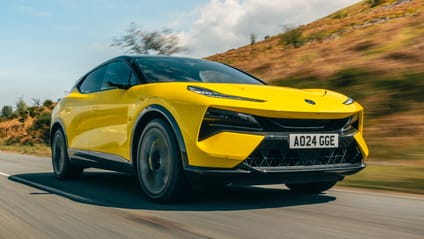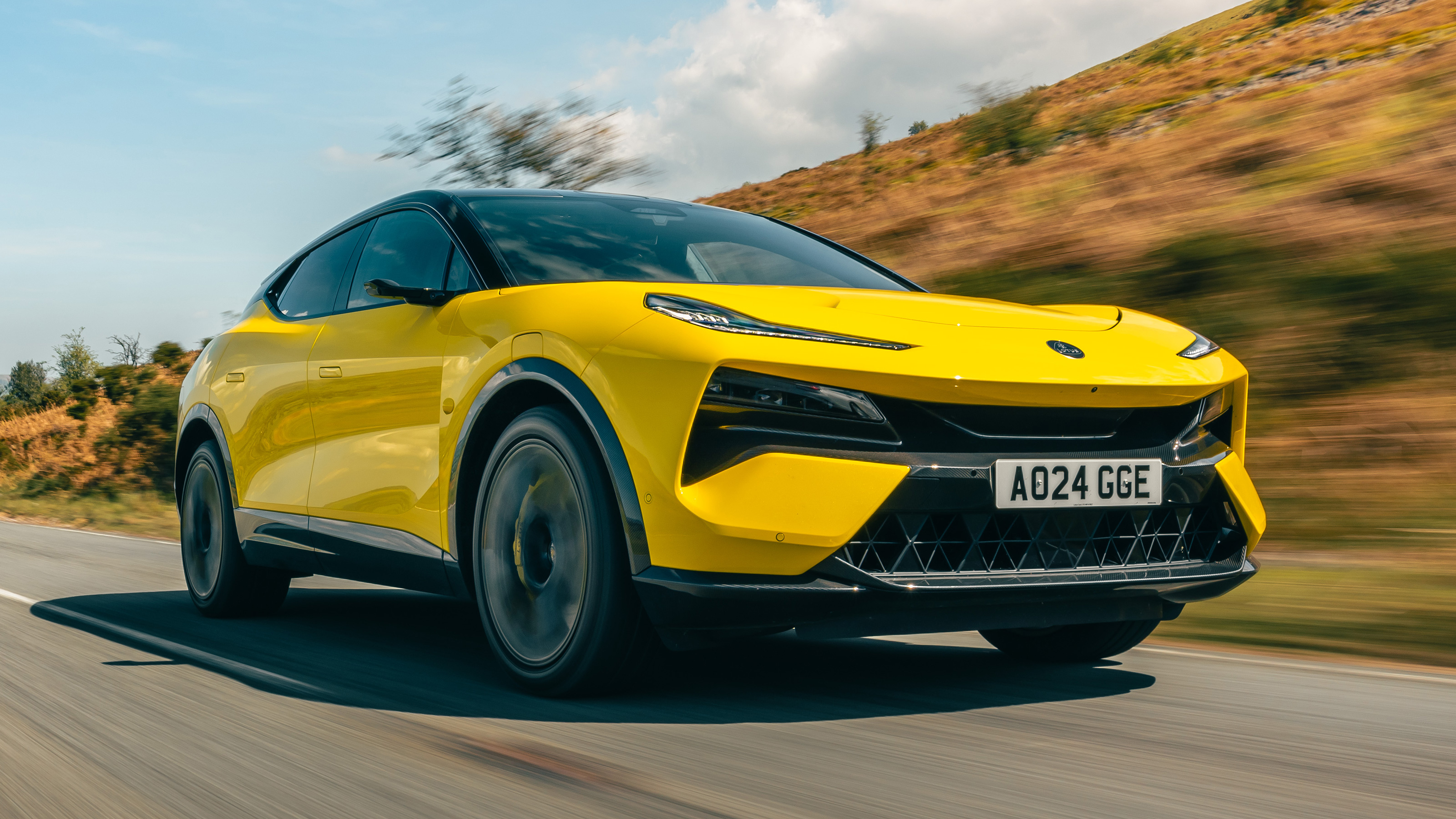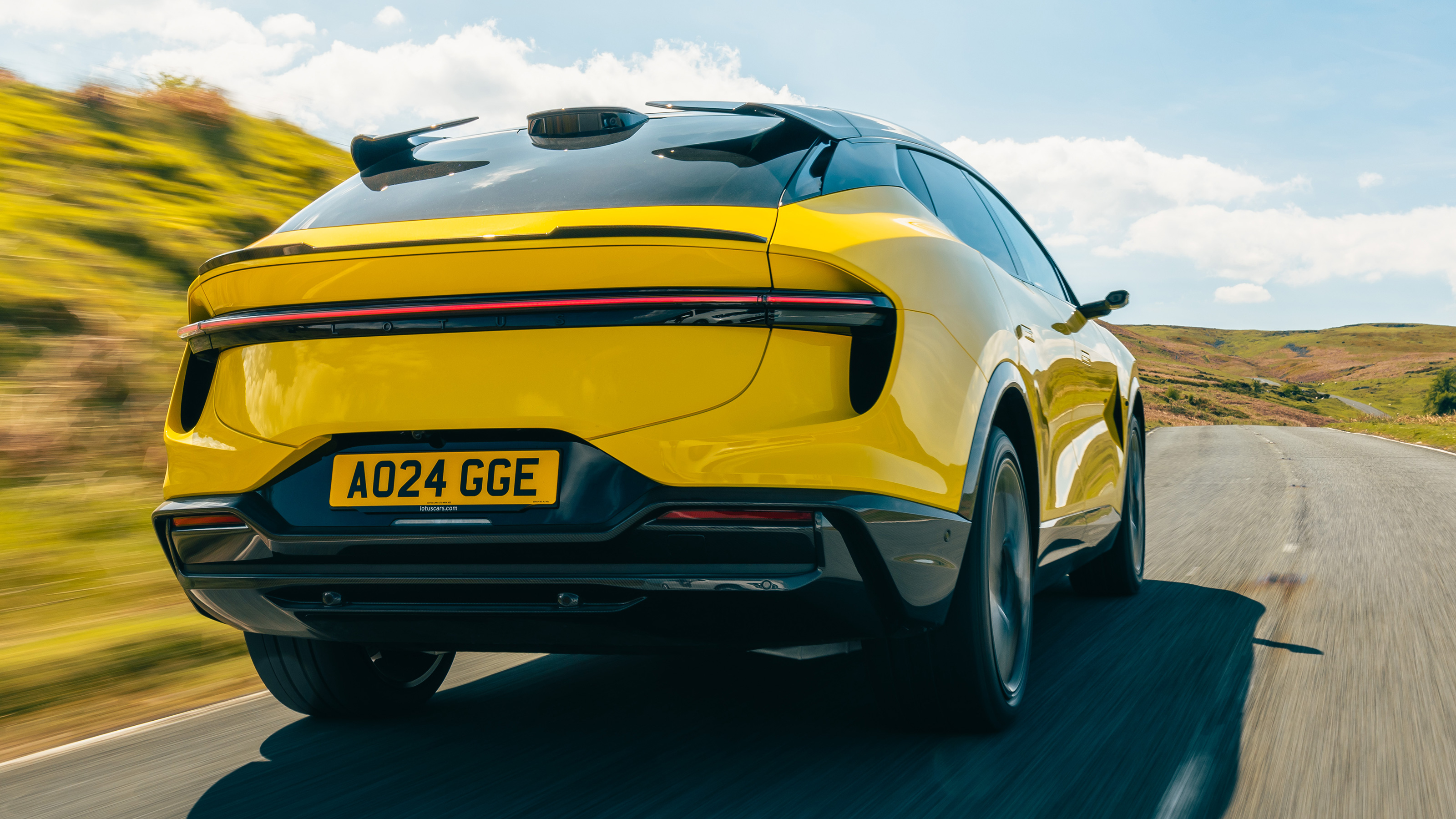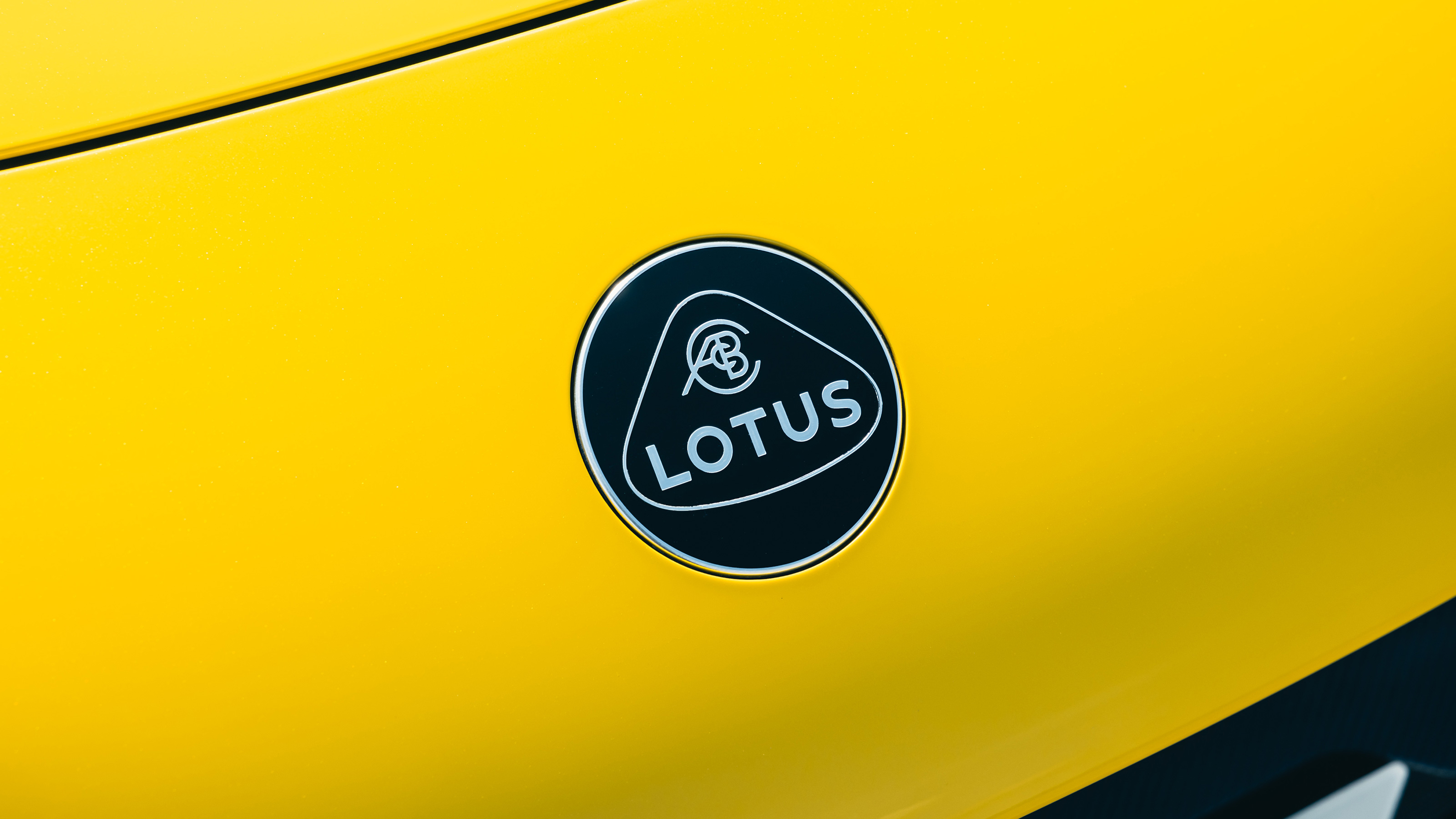
Good stuff
The best built Lotus there’s ever been, steering, body control, the way it disguises weight, interior design, tech integration
Bad stuff
Endless noise about not being a ‘proper’ Lotus, annoying ADAS, a bit chintzy
Overview
What is it?
Mildly controversial in the intellectual bin fire of social media, this. Mainly because ‘this’ is the new Lotus Eletre, and it is essentially everything the internet thinks a Lotus should not be: a 2.7-tonne electric SUV with fat skeins of technology and luxury woven through it. It is the dark to the Elise’s light, and the polar opposite to everything the brand has represented before. No car firm has ever undergone a more radical volte face.
It’s also built in China, isn’t it?
Produced in Wuhan, which seems to provoke a strange kind of wrinkle in some people’s foreheads that suggests this final piece of information confirms that a five-seat sporting SUV is indeed the antichrist and will bring about the fall of civilisation by not weighing under a tonne and being powered by a Rover K-series.
Still, if you can wade through the thick layer of Colin Chapman memes and borrowed outrage, there seems to be a lot of interest in Lotus picking up and trying something new. Presumably something that will appeal to more people than an ICE two-seater with the luggage capacity of a teaspoon. And here’s a final needle to the posterior of the old guard: this is the best built, least glitchy and fastest (road going at least) Lotus there has ever been.
What are the basics here?
So what we get is a huge 5.1-metre long, five-seat SUV with a 112kWh battery, up to 373 miles of WLTP range (depending on spec), super fast 800-volt charging and some bits of Lotus-ology applied to make it interesting to drive. Loads of tech in there, too. It’s not pitched as a game-changer, simply the Lotus of SUVs. Which takes more than just a badge and vague gesturing towards dynamic prowess, to be fair.
Hmm. So is it at least fast?
Yes, and reliably so. In the UK we’ll get three levels Eletre, Eletre S and Eletre R. Eletre and Eletre S are mechanically identical bi-motored single-speed SUVs, both with just over 600bhp. They’ll hit 62mph in 4.5 seconds and run to 160mph. The Eletre R gets an uprated rear motor (it’s not a tri-motor) with a two-speed ‘box strapped to it to provide 900bhp+ and 0-62mph in sub three-seconds. Also, just wanted to point out that if you say the word ‘Eletre’ enough times, it starts to sound really weird. Eletre. Eletre. ELETRE.
Stop that. Lotussusess are supposed to be light though, right? So is it?
Hmm. Context is probably important at this stage. The Eletre’s 665kg battery pack alone weighs close to an original Elise (735kg). We put this Eletre R on a weighbridge and it was 2,680kg (only 40kg over the claimed weight), making it 180kg lighter than a hybrid Range Rover Sport, although a better comparison is probably with the latest 729bhp Porsche Cayenne Turbo e-Hybrid which weighs in at 2,495kg. If even Porsche can’t reduce the mass of its cars, what hope is there for anyone else? Meanwhile the basic Eletre weighs in at a claimed 2,490kg, the S at 2,520kg.
So we guess you could say the Lotus is a little lighter than the class average for its battery capacity. But light weight is no longer top of the to do list. In fact we doubt it’s on there at all, because the audience for this car doesn’t care. They’re not interested in weight, they want luxury and space and image, and if the weight spirals, so be it.
What does that mean for efficiency and range?
That it’s not very impressive. The WLTP claim is 280 miles for the R, but something’s amiss there as: at the 2.2mi/kWh claimed WLTP efficiency, the 112kWh battery would run out before 250 miles. In practice you’re actually doing well to better 200 miles and travel more than two miles on each kilowatt-hour. Lotus might make bold claims about the car’s low drag (0.26Cd) and ‘porosity’ (holes through the bodywork to aid cooling and channel air), but wind and weight make fools of bold claims.
Nevertheless, there’s a good bit of thoughtfulness thrown into this platform, which is ‘all new’ according to Lotus, but we suspect is built from elements shared from Geely’s global new platform strategy. Put together in interesting and bespoke ways, sure, and with much aluminium.
How’s the cabin?
It can look chintzy in pictures (helloooo rose-gold switch option), but it turns out to be properly lovely in real life. We promise you’ve never sat in a Lotus this well made, or from better quality materials. It feels right up there with Porsche and BMW quality.
But since it’s actually Chinese, it’s laden with a swathe of new technology ripe for exploitation from over-the-air (OTA) updates. There’s enough LiDar, cameras and microwave sensors to give Boston Dynamics a migraine, plus much ADAS, connectivity and swish electronica. Shoutout to the lovely KEF Audio stereo system (standard on S and R) with Dolby surround-sound. Worth staying in the car for.
Is it any good?
Yes it is. You’ve just got to get the context right. Because although it’s a Lotus, the Eletre is not a natural Cayenne chaser. It can walk the walk alright: the steering is neat, quick and accurate, body control is impressive and it covers ground in a way that entirely belies its weight. But the interior and overall demeanour is less dynamic than that. It’s actually more closely aligned to a BMW iX: it’s almost as refined as that, and although the suspension doesn’t have the same squidge, it packs good comfort into less travel.
There’s a real easy lope to the Eletre S on a backroad, air-suspension set to ‘Tour’ mode, AWD sticking the grip levels and everything feeling better than it has any right to. Not a hard car to like on an objective level.
Our choice from the range

What's the verdict?
It’s hard not to carry some weight of prejudice into any conversation about Lotus, especially as a British brand so hardwired into the sportscar identity. But the truth is, a company cannot live by niche alone, and Lotus needed to broaden its appeal or it would die. Even if you bear antipathy towards the platform or format, you can at least have empathy for the need for it. Cue the agglomeration into the Chinese Geely Megacorporation (which also owns Volvo, Polestar, Zeekr, Lynk&Co and the London EV Company). Next step was obvious then: do a ‘Porsche Cayenne’ and make a vehicle that’s unpopular with the diehard fans but globally saleable… and these days, that means an electric SUV.
The trick here is to roll with the fact that the Eletre has nothing to do with ‘traditional Lotus’, but that doesn’t mean it can’t align itself with Lotus values, and be an interesting aspect of a growing brand. Yes, it’s built in China and not Norfolk. Yes it’s electric. Yes, it’s a high-riding SUV. But it’s also a really very convincing one, and despite all the various arguments arranged against it, it still - just a little bit - has some Lotusness in there. If you were told it was a generic Chinese SUV that had been to Lotus finishing school, you’d hands down believe it.
A Porsche Taycan Cross Turismo would still steal the TG collective heart here, but if you absolutely have to have something with more hip-height, then it works. Maybe it’s just in the steering, or the slightly soft-edged tautness when rowing down a bumpy B-road, but there’s a lot to like here. It’s not perfect, but it’s a damn good start.
The Rivals
Trending this week
- Car Review
BMW 1 Series
- Top Gear's Top 9
Nine dreadful bits of 'homeware' made by carmakers










